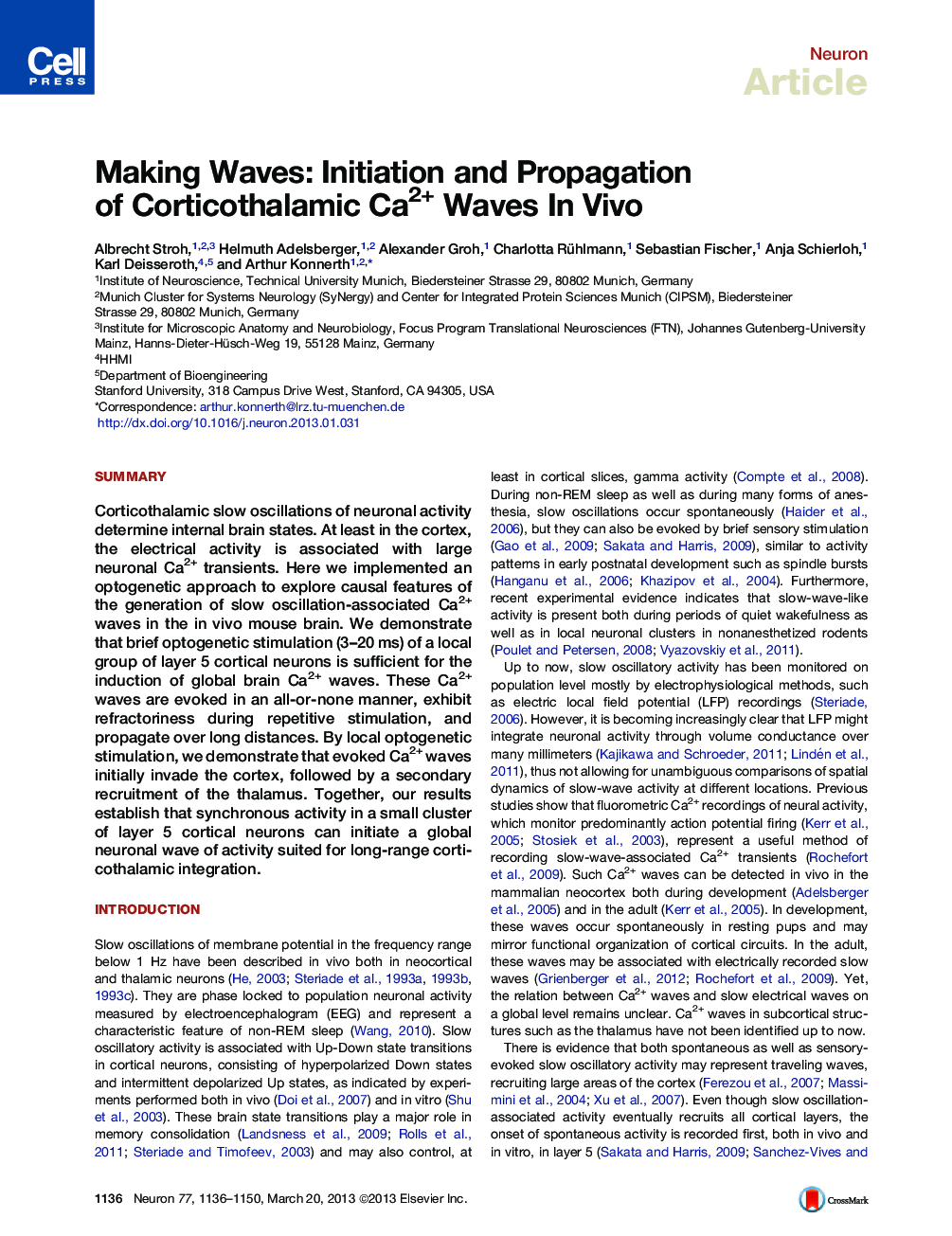| Article ID | Journal | Published Year | Pages | File Type |
|---|---|---|---|---|
| 4321540 | Neuron | 2013 | 15 Pages |
SummaryCorticothalamic slow oscillations of neuronal activity determine internal brain states. At least in the cortex, the electrical activity is associated with large neuronal Ca2+ transients. Here we implemented an optogenetic approach to explore causal features of the generation of slow oscillation-associated Ca2+ waves in the in vivo mouse brain. We demonstrate that brief optogenetic stimulation (3–20 ms) of a local group of layer 5 cortical neurons is sufficient for the induction of global brain Ca2+ waves. These Ca2+ waves are evoked in an all-or-none manner, exhibit refractoriness during repetitive stimulation, and propagate over long distances. By local optogenetic stimulation, we demonstrate that evoked Ca2+ waves initially invade the cortex, followed by a secondary recruitment of the thalamus. Together, our results establish that synchronous activity in a small cluster of layer 5 cortical neurons can initiate a global neuronal wave of activity suited for long-range corticothalamic integration.
► A small cluster of layer 5 neurons generates corticothalamic Ca2+ waves ► Demonstration of corticothalamic propagation ► Thalamic Ca2+ waves are strictly secondary to the cortical ones ► Spontaneous and sensory-evoked waves generated by similar circuit mechanisms
